Experimental Investigation of the Effect of Purge Flow and Main Flow Interaction in a Low-Speed Turbine Cascade Passage
Abstract
:1. Introduction
2. Methodology
2.1. Experimental Methods
2.2. Entropy Production in Turbulent Flows
2.3. Vortex Identification with Rortex Method
3. Result and Discussion
3.1. Time-Averaged Flow Fields
3.2. Effect of Purge Flow on Secondary Flows
3.3. Entropy Production with Different Purge Flow Rates
4. Conclusions
Author Contributions
Funding
Conflicts of Interest
Nomenclature
| Cb | Blockage Coefficient |
| Cm | Non-dimensional Purge Flow Rate |
| Cw, min | Non-dimensional Minimum Sealing Flow Rate to Prevent Gas Ingestion |
| Cp, max | Non-dimensional Pressure Coefficient |
| k | Thermal Conductivity, W/(m·K) |
| Main Flow Rate, kg/s | |
| Purge Flow Rate, kg/s | |
| Entropy Production Rate, J/(KS) | |
| Transfer Matrix | |
| Transpose of Matrix Q | |
| Rotating Axis | |
| R | Rortex Value, rad/s |
| u, v | Velocity in xyz Frame, m/s |
| U, V | Velocity in XYZ Frame, m/s |
| Tensor of Velocity Gradient | |
| Viscous Stress Arising from Velocity Gradients in the Fluid Motion | |
| μ | Dynamic Viscosity, N·s/㎡ |
| δij | Kronecker delta |
| θ | Rotating Angle, rad |
| Angular Velocity, rad/s |
References
- Bayley, F.J.; Owen, J.M. The Fluid Dynamics of a Shrouded Disk System With a Radial Outflow of Coolant. J. Eng. Gas Turb. Power 1970, 92, 335–341. [Google Scholar] [CrossRef]
- Phadke, U.P.; Owen, J.M. Aerodynamic aspects of the sealing of gas-turbine rotor-stator systems: Part 1: The behavior of simple shrouded rotating-disk systems in a quiescent environment. Int. J. Heat Fluid Flow 1988, 9, 98–105. [Google Scholar] [CrossRef]
- Phadke, U.P.; Owen, J.M. Aerodynamic Aspects of the Sealing of Gas-Turbine Rotor-Stator Systems: Part 3: The Effect of Non-axisymmetric External Flow on Seal Performance. Int. J. Heat Fluid Flow 1988, 9, 113–117. [Google Scholar] [CrossRef]
- Phadke, U.P.; Owen, J.M. Aerodynamic aspects of the sealing of gas-turbine rotor-stator systems: Part 2: The performance of simple seals in a quasi-axisymmetric external flow. Int. J. Heat Fluid Flow 1988, 9, 106–112. [Google Scholar] [CrossRef]
- Phadke, U.P.; Owen, J.M. An Investigation of Ingress for an Air-Cooled Shrouded Rotating Disk System with Radial-Clearance Seals. J. Eng. Power 1983, 105, 178–182. [Google Scholar] [CrossRef]
- Chew, J.W.; Green, T.; Turner, A.B. Rim sealing of rotor-stator wheelspaces in the presence of external flow. In Proceedings of the ASME 1994 International Gas Turbine and Aeroengine Congress and Exposition, The Hague, The Netherlands, 13–16 June 1994; American Society of Mechanical Engineers: New York, NY, USA, 1994. [Google Scholar]
- Chew, J.W.; Dadkhah, S.; Turner, A.B. Rim Sealing of Rotor-stator Wheelspaces in the Absence of External Flow. J. Turbomach. 1992, 114, 433–438. [Google Scholar] [CrossRef]
- Green, T.; Turner, A.B. Ingestion into the upstream wheelspace of an axial turbine stage. Transactions-American Society of Mechanical Engineers. J. Turbomach. 1994, 116, 327. [Google Scholar] [CrossRef]
- Bohn, D.; Johann, E.; Krüger, U. Experimental and Numerical Investigations of Aerodynamic Aspects of Hot Gas Ingestion in Rotor-Stator Systems With Superimposed Cooling Mass Flow. In Proceedings of the ASME 1995 International Gas Turbine and Aeroengine Congress and Exposition, Houston, TX, USA, 5–8 June 1995; Volume 1: Turbomachinery. [Google Scholar]
- Bohn, D.; Rudzinski, B.; Sürken, N.; Gärtner, W. Experimental and numerical investigation of the influence of rotor blades on hot gas ingestion into the upstream cavity of an axial turbine stage. In ASME Turbo Expo 2000: Power for Land, Sea, and Air; American Society of Mechanical Engineers: New York, NY, USA, 2000. [Google Scholar]
- Owen, J.M. Prediction of Ingestion Through Turbine Rim Seals-Part I: Rotationally Induced Ingress. J. Turbomach 2011, 133, 031005. [Google Scholar] [CrossRef]
- Owen, J.M. Prediction of Ingestion Through Turbine Rim Seals—Part 1: Rotationally-Induced Ingress. In Proceedings of the ASME Turbo Expo 2009: Power for Land, Sea, and Air, Orlando, FL, USA, 8–12 June 2009; Volume 3: Heat Transfer, Parts A and B, pp. 1071–1082. [Google Scholar]
- Owen, J.M.; Wu, K.; Scobie, J.A.; Sangan, C.M.; Cho, G.; Lock, G.D. Use of Pressure Measurements to Determine Effectiveness of Turbine Rim Seals. J. Eng. Gas Turb. Power 2015, 137, 032510. [Google Scholar] [CrossRef]
- Balasubramanian, J.; Pathak, P.S.; Thiagarajan, J.K.; Singh, P.; Roy, R.P.; Mirzamoghadam, A.V. Experimental Study of Ingestion in the Rotor-stator Disk Cavity of a Subscale Axial Turbine Stage. J. Turbomach 2015, 137, 091010. [Google Scholar] [CrossRef]
- Dahlqvist, J.; Fridh, J. Seedgas Investigation of Turbine Stage and Seal Performance at Varying Cavity Purge Rates and Operating Speeds. In Proceedings of the Turbomachinery Technical Conference and Exposition Proceedings of ASME Turbo Expo 2017, Charlotte, NC, USA, 26–30 June 2017; American Society of Mechanical Engineers: New York, NY, USA, 2017. [Google Scholar]
- McLean, C.; Camci, C.; Glezer, B. Mainstream Aerodynamic Effects Due to Wheelspace Coolant Injection in a High-Pressure Turbine Stage: Part I—Aerodynamic Measurements in the Stationary Frame. J. Turbomach 2001, 123, 687–696. [Google Scholar] [CrossRef]
- McLean, C.; Camci, C.; Glezer, B. Mainstream Aerodynamic Effects Due to Wheelspace Coolant Injection in a High-Pressure Turbine Stage: Part II—Aerodynamic Measurements in the Rotational Frame. J. Turbomach 2001, 123, 697–703. [Google Scholar] [CrossRef]
- Schuepbach, P.; Abhari, R.S.; Rose, M.G.; Germain, T.; Raab, I.; Gier, J. Effects of Suction and Injection Purge-Flow on the Secondary Flow Structures of a High-Work Turbine. J. Turbomach 2010, 132, 021021–021021-8. [Google Scholar] [CrossRef]
- Regina, K.; Kalfas, A.I.; Abhari, R.S. Experimental Investigation of Purge Flow Effects on a High Pressure Turbine Stage. J. Turbomach 2015, 137, 041006. [Google Scholar] [CrossRef]
- Gisbert, F.; Corral, R.; Chia, J.M.; Lopez, C. Cavity Effects on the Design of Turbine Profiled End Walls. In Turbo Expo: Power for Land, Sea, and Air; American Society of Mechanical Engineers: New York, NY, USA, 2008; pp. 2543–2554. [Google Scholar]
- Jenny, P.; Abhari, R.S.; Rose, M.G.; Brettschneider, M.; Gier, J. A Low Pressure Turbine With Profiled Endwalls and Purge Flow Operating With a Pressure Side Bubble. J. Turbomach 2012, 134, 061038–061039. [Google Scholar] [CrossRef]
- Schreiner, B.D.J.; Wilson, M.; Li, Y.S.; Sangan, C.M. Design of Contoured Turbine Endwalls in the Presence of Purge Flow: A Feature-Based Approach. In Proceedings of the ASME Turbo Expo 2019: Turbomachinery Technical Conference and Expositio, Phoenix, AZ, USA; 2019. [Google Scholar]
- Tian, Y.T.; Ma, H.W.; Ma, R. Stereoscopic PIV Measurements of the Flow Field in a Turbine Cascade. J. Therm. Sci. 2017, 26, 89–95. [Google Scholar] [CrossRef]
- Shi, M. Effect of Incidence Angle on Entropy Generation in the Boundary Layers on the Blade Suction Surface in a Compressor Cascade. Entropy 2019, 21, 1049. [Google Scholar] [CrossRef] [Green Version]
- Bejan, A. Entropy Generation Minimization: The Method of Thermodynamic Optimization of Finite-Time Systems and Finite-Time Processes; CRC Press: Boca Raton, FL, USA, 1996. [Google Scholar]
- Naterer, G.F.; Camberos, J.A. Entropy Based Design and Analysis of Fluids Engineering Systems; CRC Press: Boca Raton, FL, USA, 2008. [Google Scholar]
- Tian, S.; Gao, Y.; Dong, X.; Liu, C. Definitions of vortex vector and vortex. J. Fluid Mech. 2018, 849, 312–339. [Google Scholar] [CrossRef] [Green Version]
- Liu, C.; Gao, Y.; Tian, S.; Dong, X. Rortex A New Vortex Vector Definition and Vorticity Tensor and Vector Decompositions. Phys Fluids 2018, 30, 035103. [Google Scholar] [CrossRef] [Green Version]
- Thole, K. Airfoil endwall heat transfer. The Gas Turbine Handbook; US Department of Energy: Washington, DC, USA, 2006; pp. 353–363. [Google Scholar]
- Wang, H.P.; Olson, S.J.; Goldstein, R.J.; Eckert, E. Flow Visualisation in a Linear Turbine Cascade of High Performance Turbine Blades. J. Turbomach. 1997, 119, 1–8. [Google Scholar] [CrossRef]
- Rabs, M.; Benra, F.K.; Doiminick, C.; Schnieder, O. Computational Study of Kelvin-Helmholtz Instability Created by Interaction of the Mainstream Flow and the Seal Flow in Gas Turbines. In Proceedings of the ASME 2011 Turbo Expo: Turbine Technical Conference and Exposition, Vancouver, BC, Canada, 6–10 June 2011; pp. 731–740. [Google Scholar]
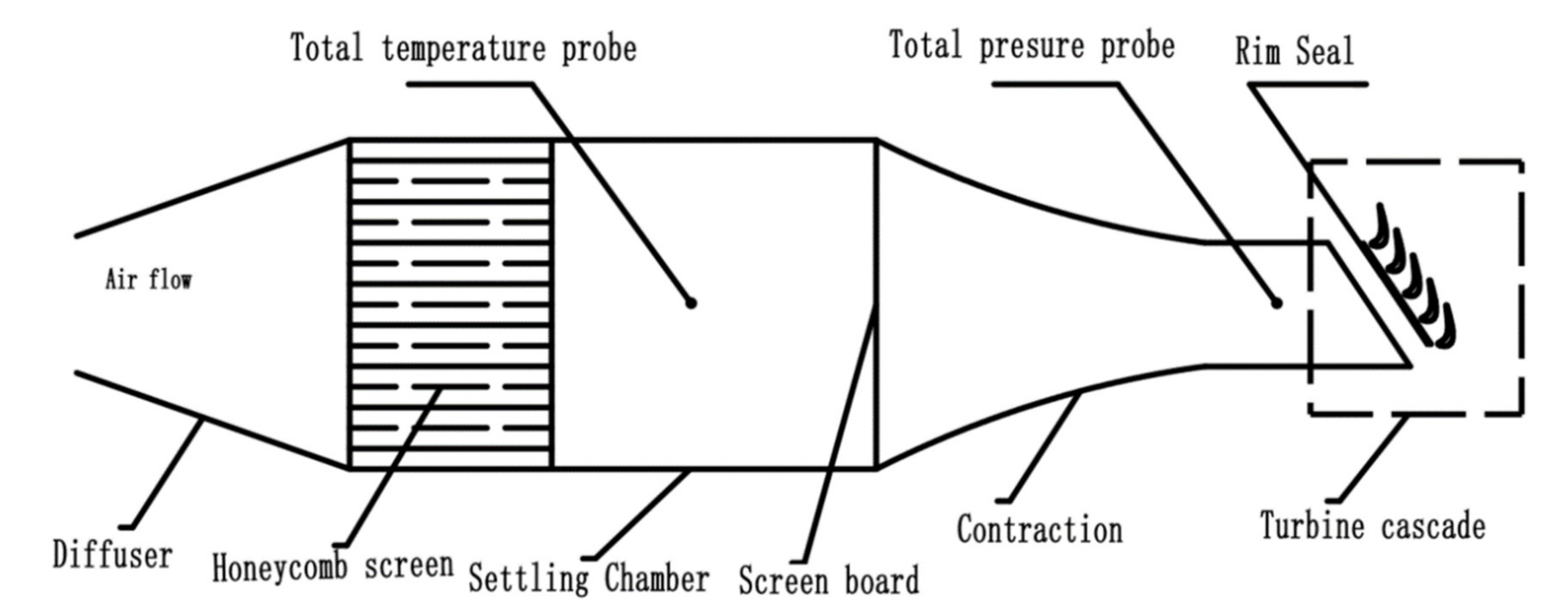

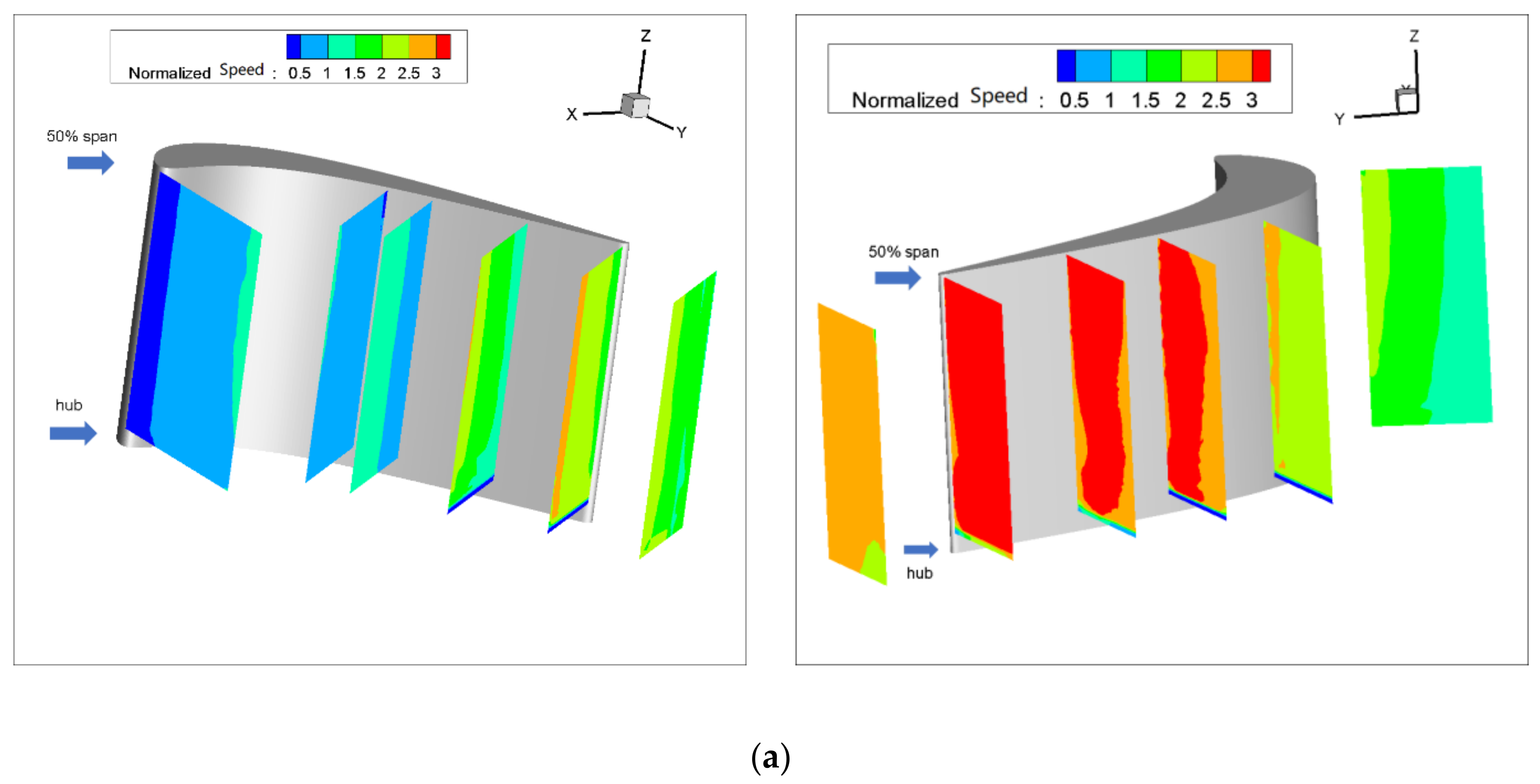
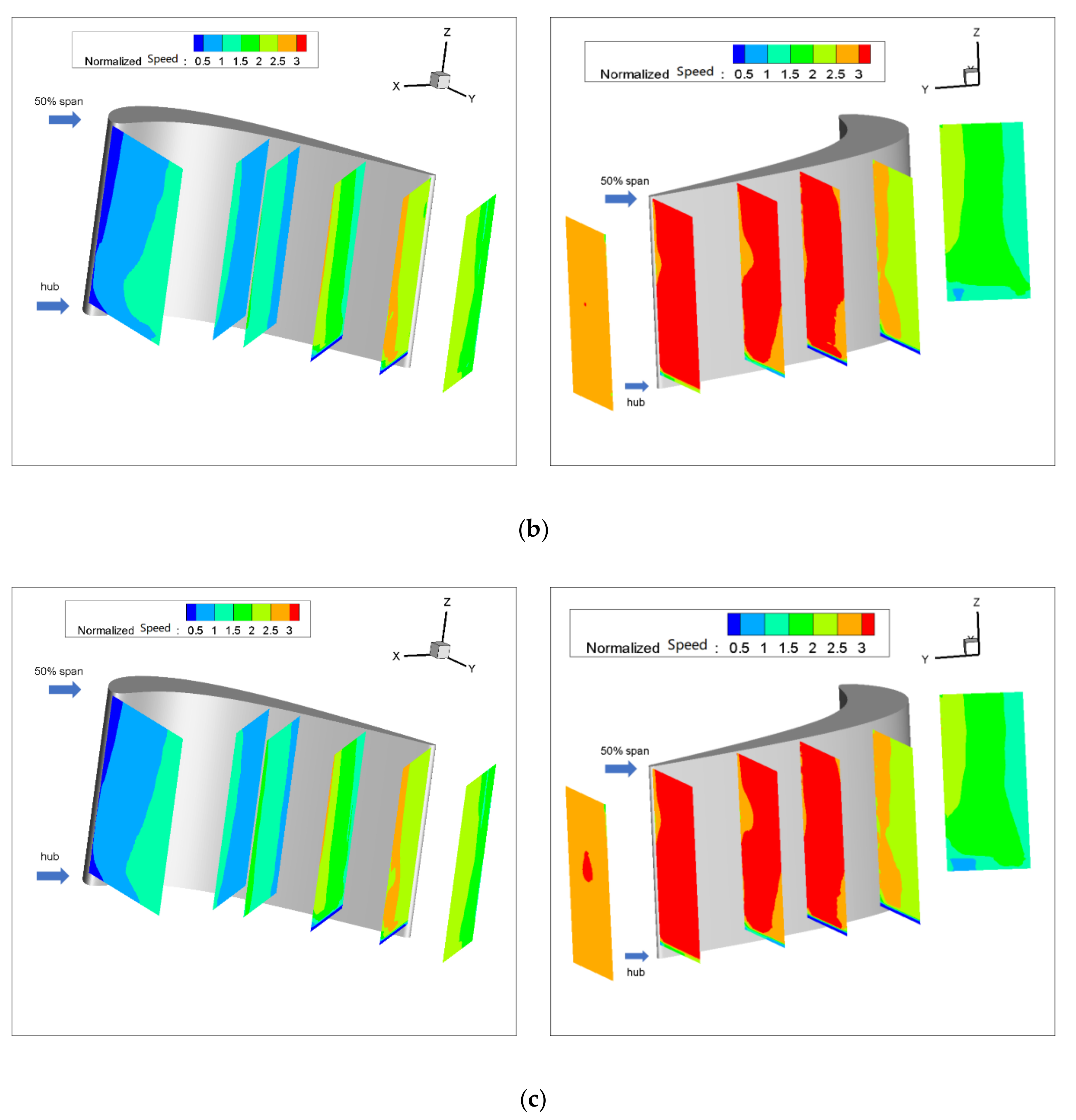

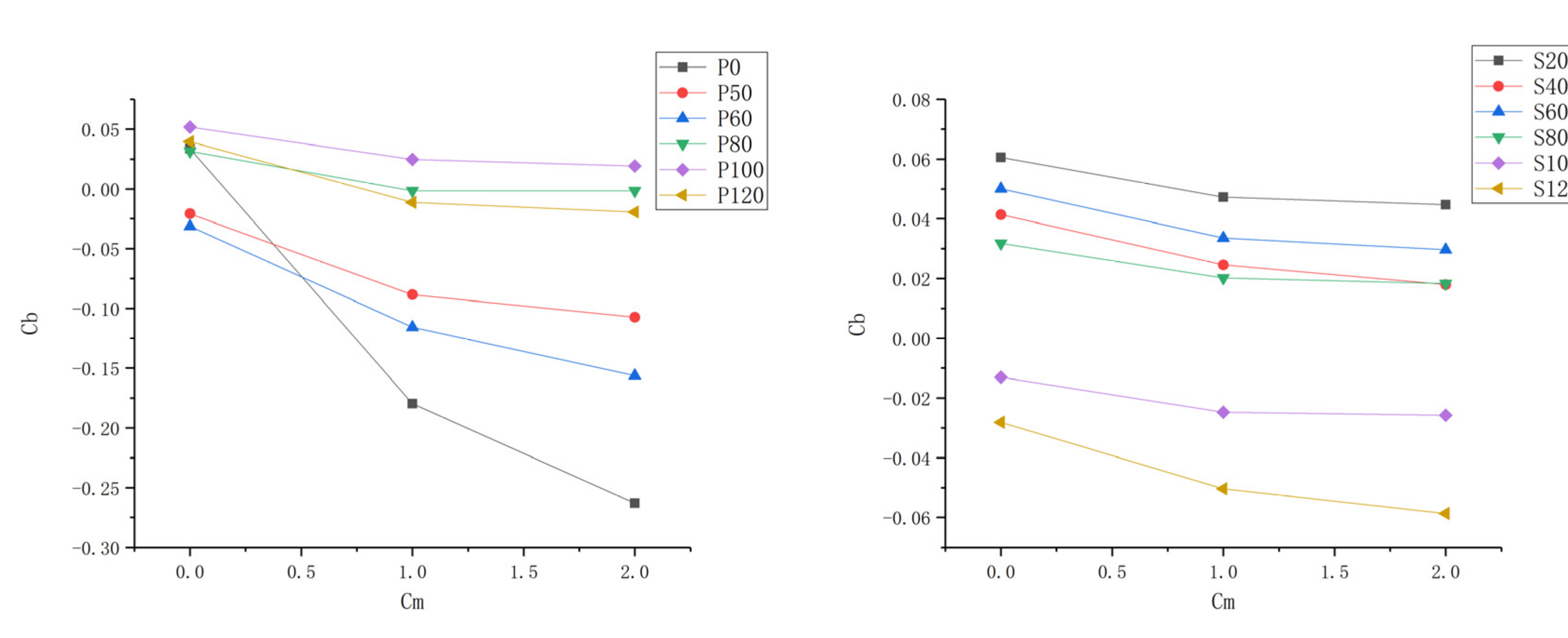
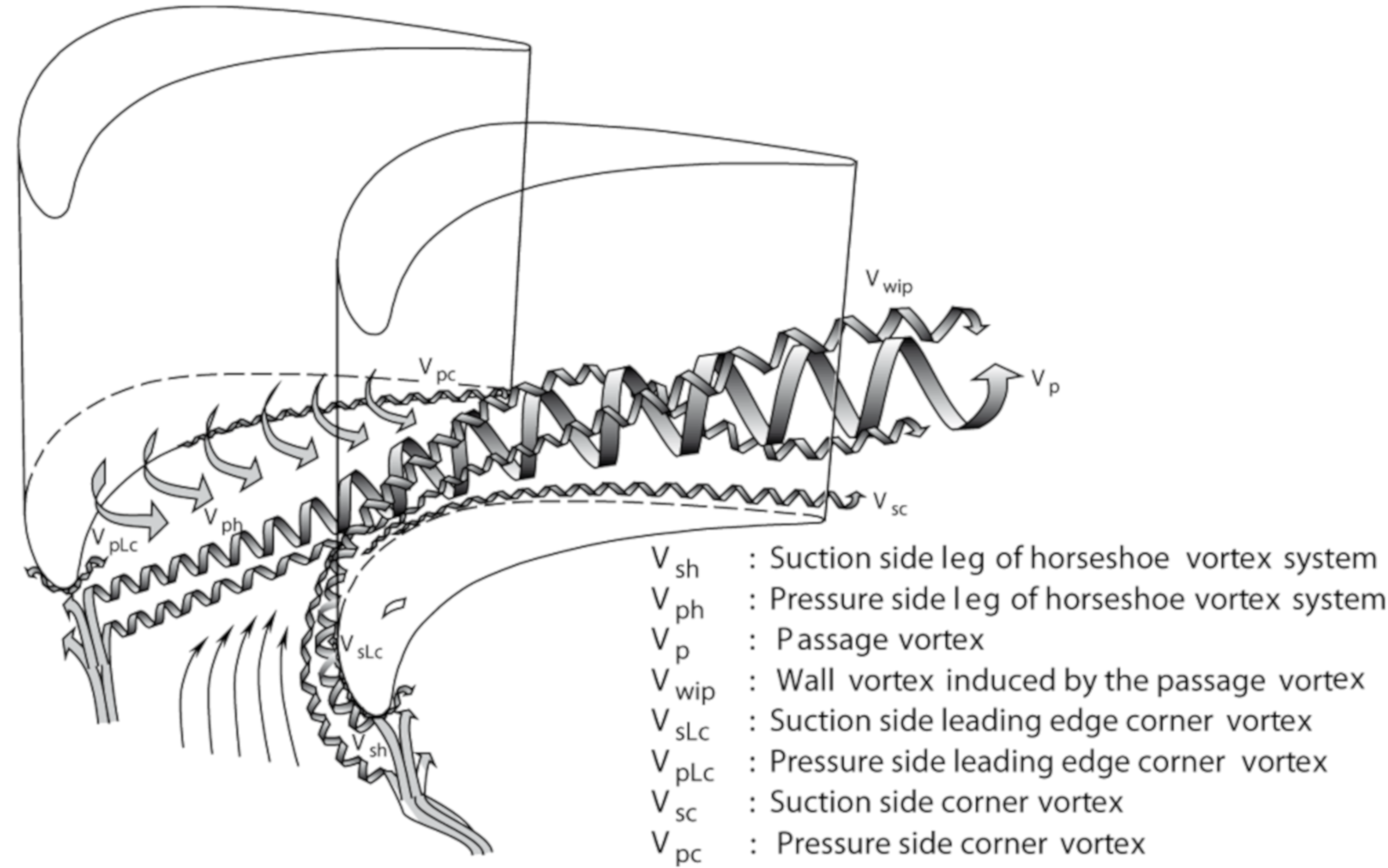
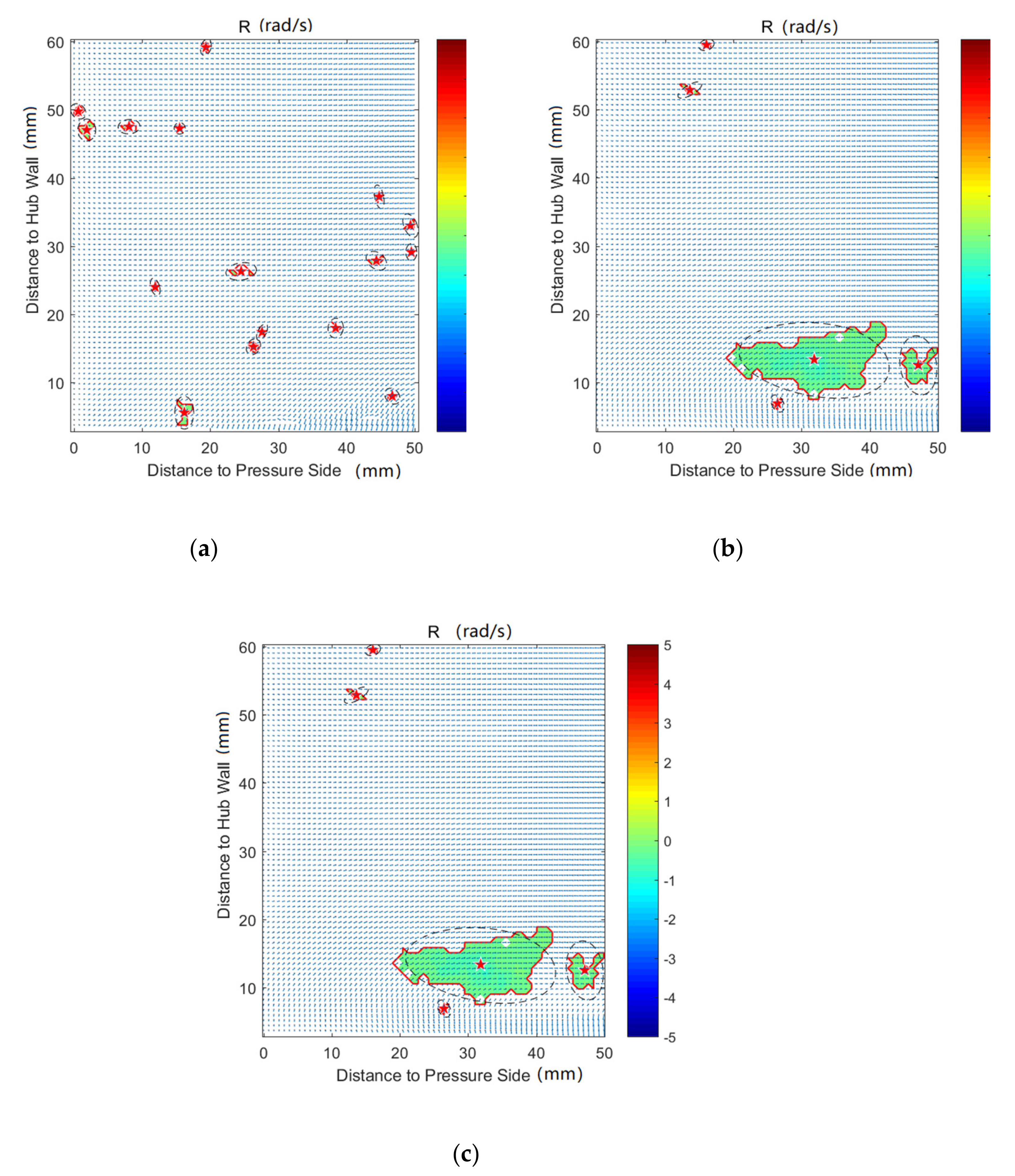
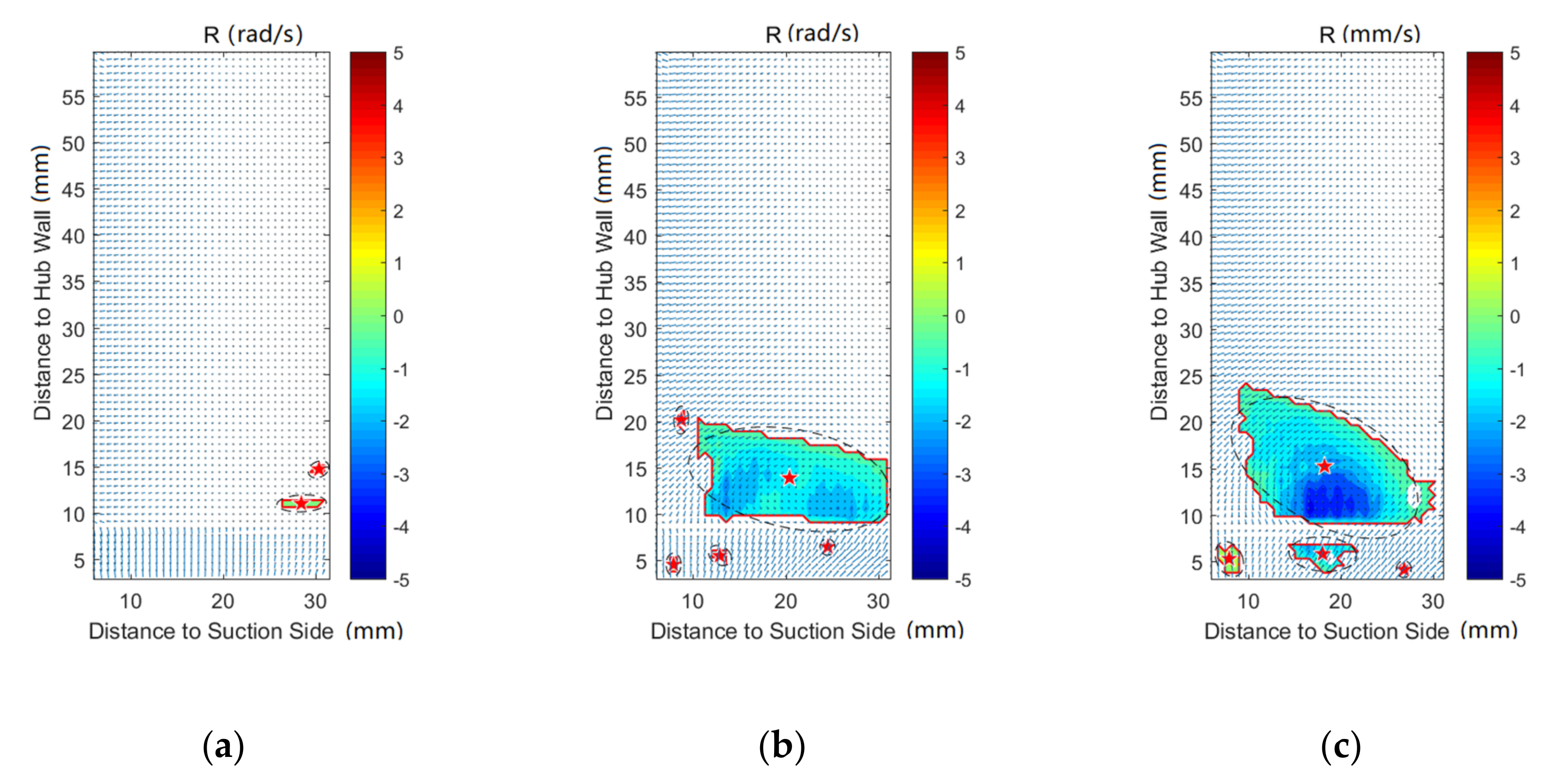


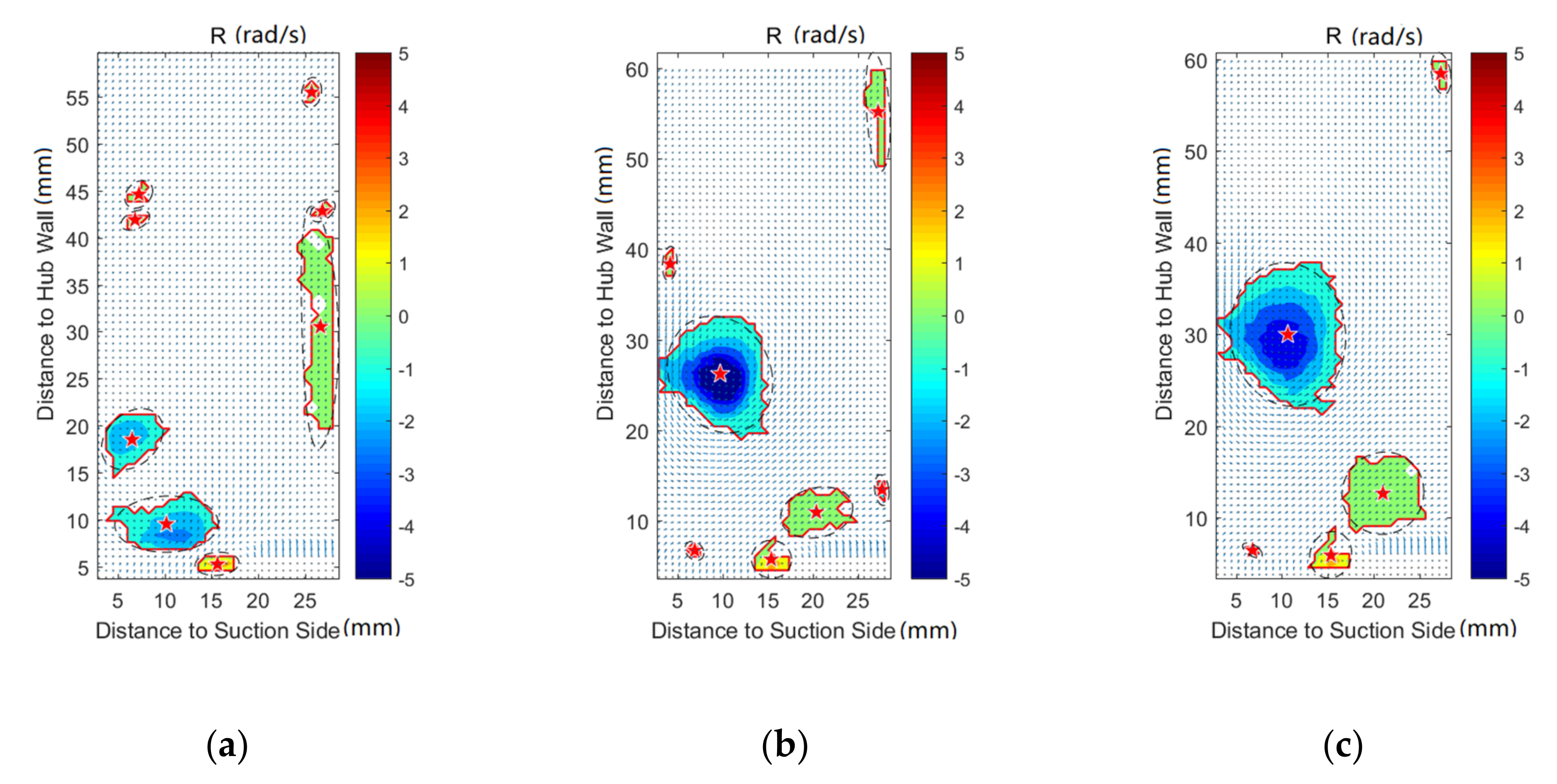

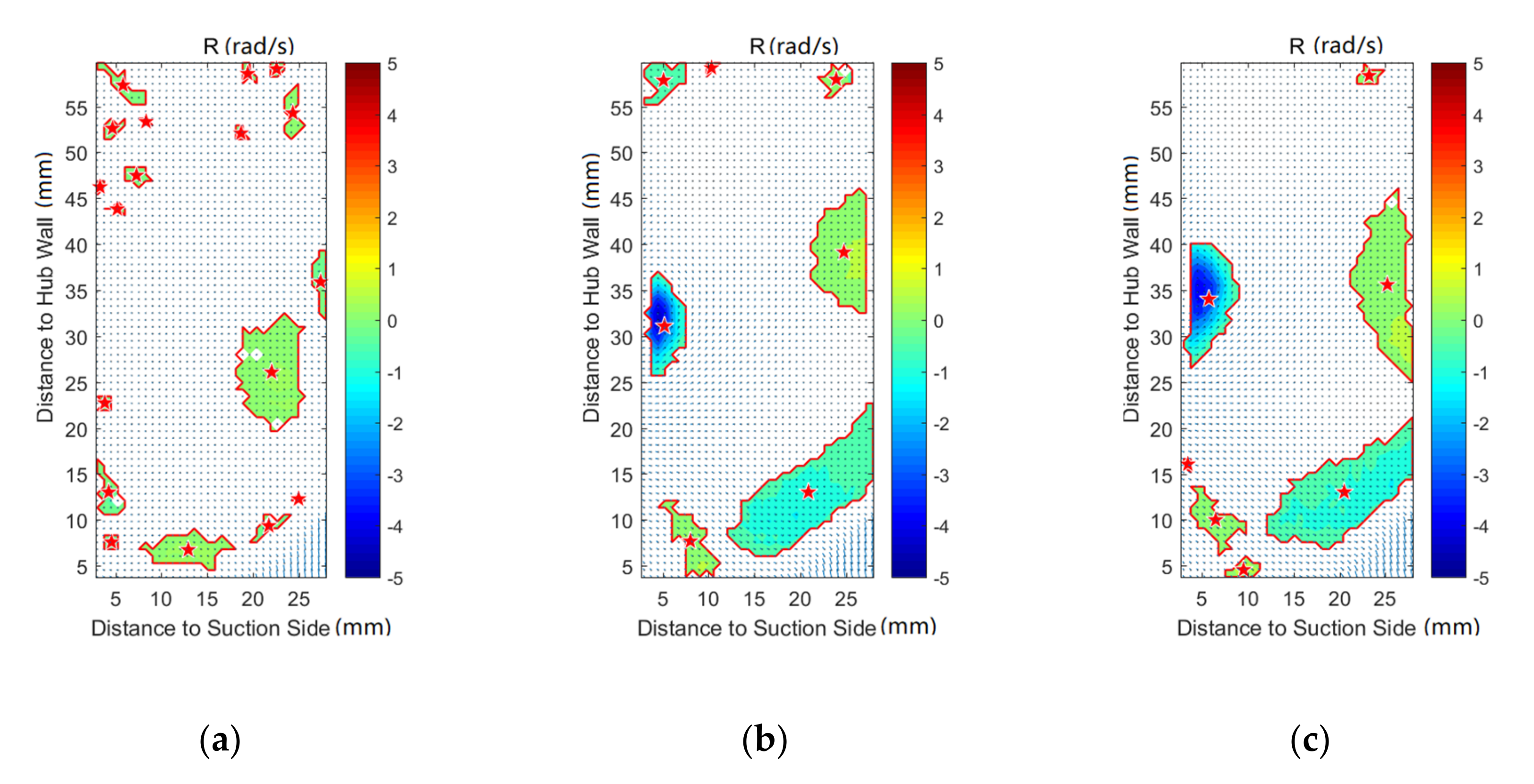


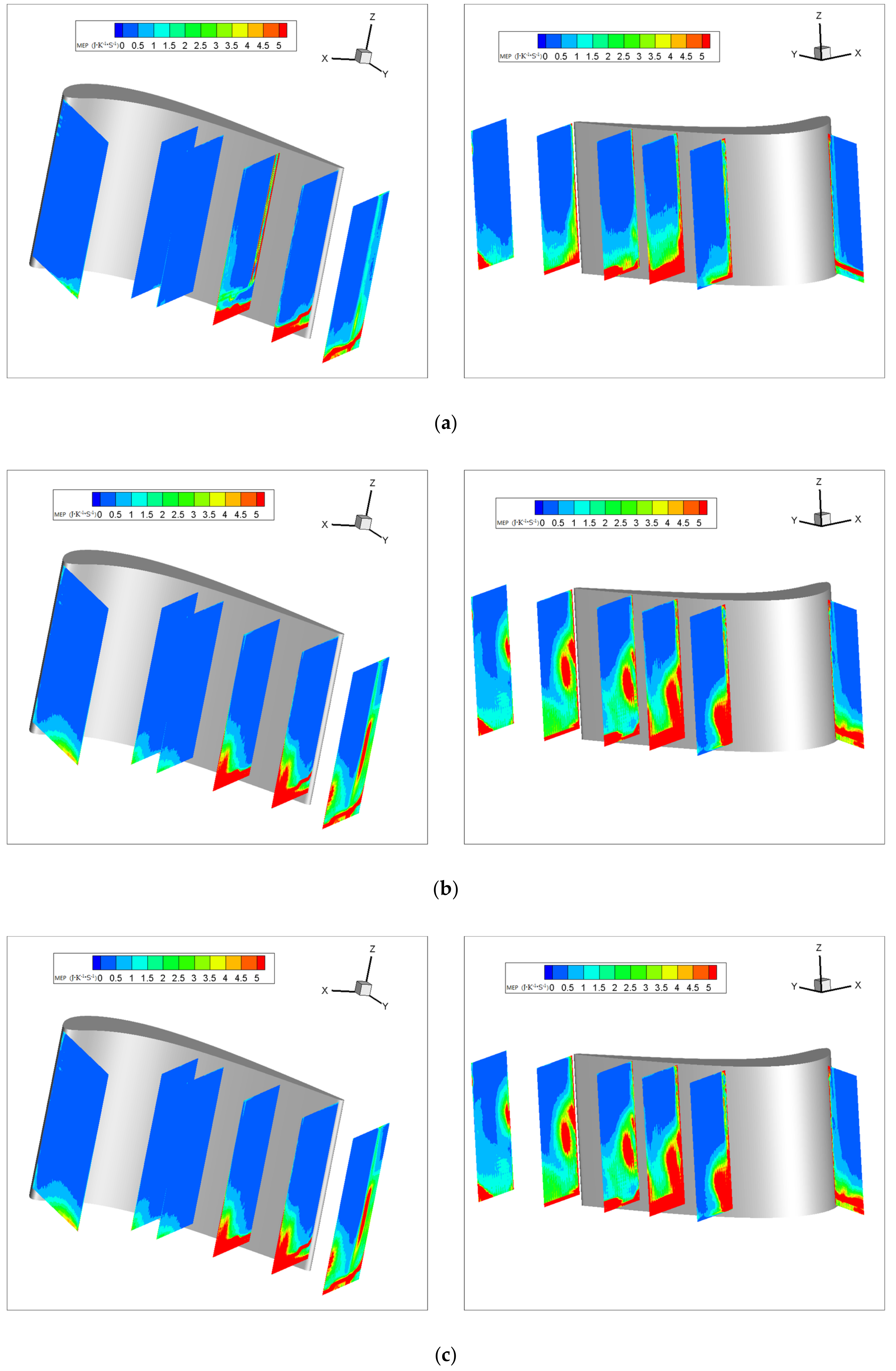

| Number of Blades | 5 |
|---|---|
| Chord Length | 102 mm |
| Axial Chord | 71 mm |
| Span | 120 mm |
| Pitch | 93.75 mm |
| Inlet Flow Angle | 33.6° |
| Outlet Flow Angle | 67° |
© 2020 by the authors. Licensee MDPI, Basel, Switzerland. This article is an open access article distributed under the terms and conditions of the Creative Commons Attribution (CC BY) license (http://creativecommons.org/licenses/by/4.0/).
Share and Cite
Zhao, L.; Ma, H. Experimental Investigation of the Effect of Purge Flow and Main Flow Interaction in a Low-Speed Turbine Cascade Passage. Entropy 2020, 22, 623. https://doi.org/10.3390/e22060623
Zhao L, Ma H. Experimental Investigation of the Effect of Purge Flow and Main Flow Interaction in a Low-Speed Turbine Cascade Passage. Entropy. 2020; 22(6):623. https://doi.org/10.3390/e22060623
Chicago/Turabian StyleZhao, Lianpeng, and Hongwei Ma. 2020. "Experimental Investigation of the Effect of Purge Flow and Main Flow Interaction in a Low-Speed Turbine Cascade Passage" Entropy 22, no. 6: 623. https://doi.org/10.3390/e22060623




